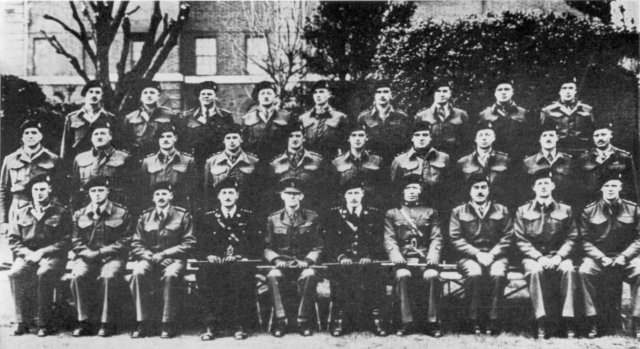

 The South African
The South African
Notes, Questions and Replies
J.J. Hulme

Messerschmitt Me 262B-1a/Ul
Back row: Lieuts. A. Bredenkamp, E. B. Norton, E. D. Clarke, C. A. D. Bircher, Q.S. Ford, Capt. L. L. A. McKay, W. H. England, P. E. B. Lefrere, D. R. Newton,,
Second row: Lieuts. S. L. Fouche, C. K. Brown MC., O. M. C. McKenzie, A. Atlas, D. H. Ranger, D. C. Thomas, A. L. Croneen, D. J. Malan, W. D. T. Phillips, M. J. van den Berg,
Front row: Lieuts. I. Goldstein, B. Linscott, H. T. Collett, Capt. T. H. Baker-Cresswell, Brigadier Chater, CB, DSO, OBE, Capt. Crockett, R. S. M. Gilliam, Capt. R. L. Plessis, Lieuts. D. Gilmour and J. J. A. McLaren.
EDITOR'S NOTE: Major Hulme has not included the following names, which appear above, in his note - Capt. T. H. Baker-Cresswell, Brig. Chater, Capt. Crockett and R. S. M. Gilliam. It is presumed that they were staff members of the Marine establishment concerned.
The glaring errors:
(i) The Zeppelin was invented by Graf Ferdinand von Zeppelin, not Harra.
(ii) The airship known as the "Graf Zeppelin" was built and launched quite some time after the Graf von Zeppelin's
death. So he actually did not invent the "Graf Zeppelin."
(iii) The "Graf Zeppelin" was built purely as a passenger carrying commercial rigid airship. It never bombed London,
nor did it have any provisions for carrying bombs or machine guns, etc. Also, it was built after the first World War,
and scrapped before the second World War. As an aside I might add that it was a completely safe airship, even
though it used hydrogen, and never injured a single passenger or crew member in its years of service.
(iv) A Graf, in the German, Austrian, or Swedish nobility is equal to an English Earl, or a French or Italian Count. So
it properly would be Graf von Zeppelin, not Count.
Walter M Kaufman.
Note: The author and the editors express their thanks to Mr Kaufman for drawing their attention to the above.
Return to Journal Index OR Society's Home page
South African Military History Society / scribe@samilitaryhistory.org